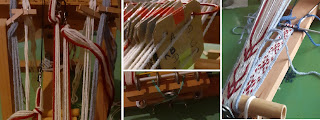Not sure where this will go, but these small patches are quite fun & quick to make and when there's enough empty space in my containers I will be able to put new yarn in there for some bigger project.
23 single crochet stitches & 10 crosses per row, crochet hook 3.5 mm


















































